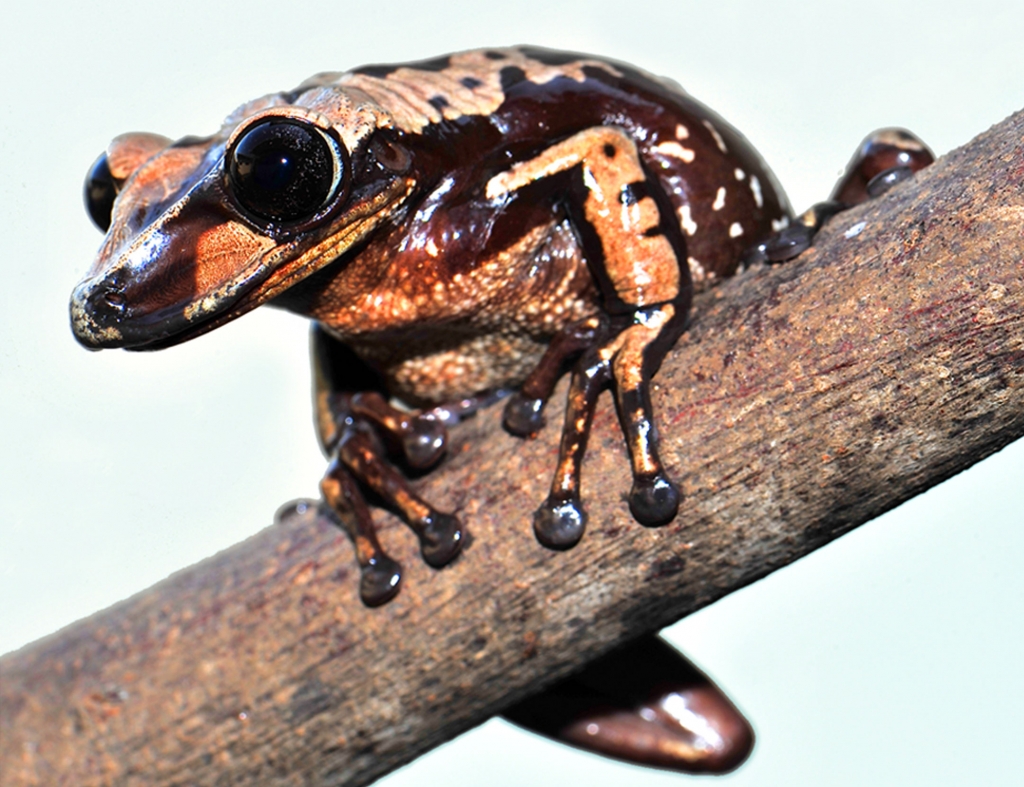-
Tips for becoming a good boxer - November 6, 2020
-
7 expert tips for making your hens night a memorable one - November 6, 2020
-
5 reasons to host your Christmas party on a cruise boat - November 6, 2020
-
What to do when you’re charged with a crime - November 6, 2020
-
Should you get one or multiple dogs? Here’s all you need to know - November 3, 2020
-
A Guide: How to Build Your Very Own Magic Mirror - February 14, 2019
-
Our Top Inspirational Baseball Stars - November 24, 2018
-
Five Tech Tools That Will Help You Turn Your Blog into a Business - November 24, 2018
-
How to Indulge on Vacation without Expanding Your Waist - November 9, 2018
-
5 Strategies for Businesses to Appeal to Today’s Increasingly Mobile-Crazed Customers - November 9, 2018
Biologist discovers venomous frog the hard way
Not only do the frogs produce potent toxins, but they also have a mechanism to deliver those harmful secretions into another animal using bony spines on their heads.
Advertisement
Two species of highly toxic frogs have a bone to prick with their predators. “They use this motion to defend themselves with their head spines”, Utah State University biologist Edmund “Butch” Brodie, Jr., said in a press release.
The research team’s calculations suggest that a single gram of the venom from the more toxic frog species, Aparasphenodon brunoi, could kill more than 300,000 mice, or about 80 humans, while a gram of the venom from Corythomantis greeningi could kill more than 24,000 mice, or about six humans.
The researchers say the new discovery is important for understanding the biology of amphibians and their interactions with predators in the wild.
Most amphibians, such as frogs, newts and salamanders, concentrate or secrete poisons in skin glands to ward off predators.
The venomous traits of the two species, Corythomantis greeningi and Aparasphenodon brunoi, may have gone unnoticed had not one of the researchers been stung while handling the less toxic of the two – C. greeningi. The slimy-skinned A. brunoi, which sports orange and brown coloration and prefers the humidity of the rain forests, boasts an ultra deadly venom – 25 times stronger than a viper’s toxins.
“Discovering a truly venomous frog is nothing any of us expected, and finding frogs with skin secretions more venomous than those of the deadly pit vipers of the genus Bothrops was astounding”, Dr Brodie said. “It moves the study of amphibian defenses to a new level”. “Nothing can get past the head spines”. “Still, I would not want to test the venoms of Aparasphenodon on myself!” “We are careful to avoid getting their skin secretions on our skin because even a small skin abrasion could allow the entry of the venom into the body”. Scientists have known about C. greeningi and A. brunois for decades, but they didn’t know much about their anatomy or behavior. But scientists have known little of their biology.
Unusually, the frogs can wiggle and flex their heads up, down and sideways, and this is how they inject their venom, jabbing their spiny upper lips into their attacker’s flesh.
The researchers are not certain whether these frogs are immune to their own venom, but they suspect they are, Brodie said.
Advertisement
Carlos Jared, a researcher at the Butantan Institute in São Paulo and the lead author on the study, learned of the frog’s venomous offense firsthand. The frogs are described in the latest issue of the journal Current Biology.




























